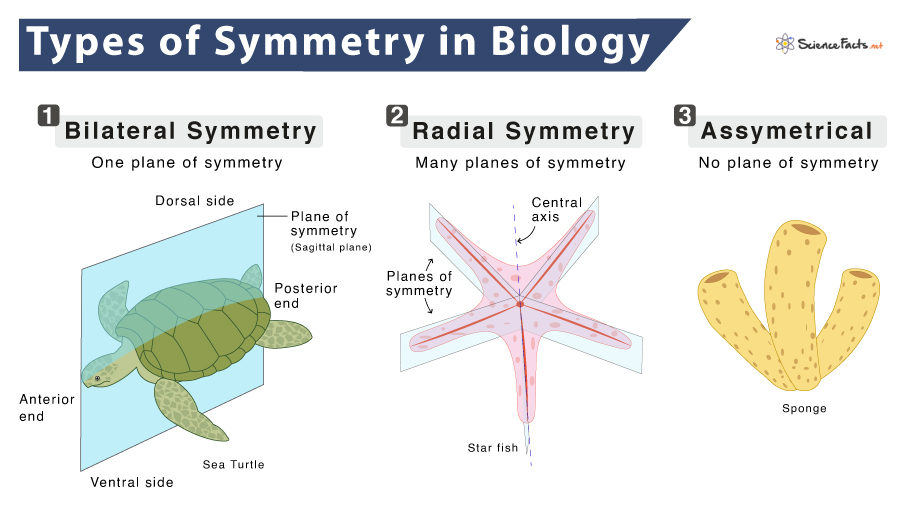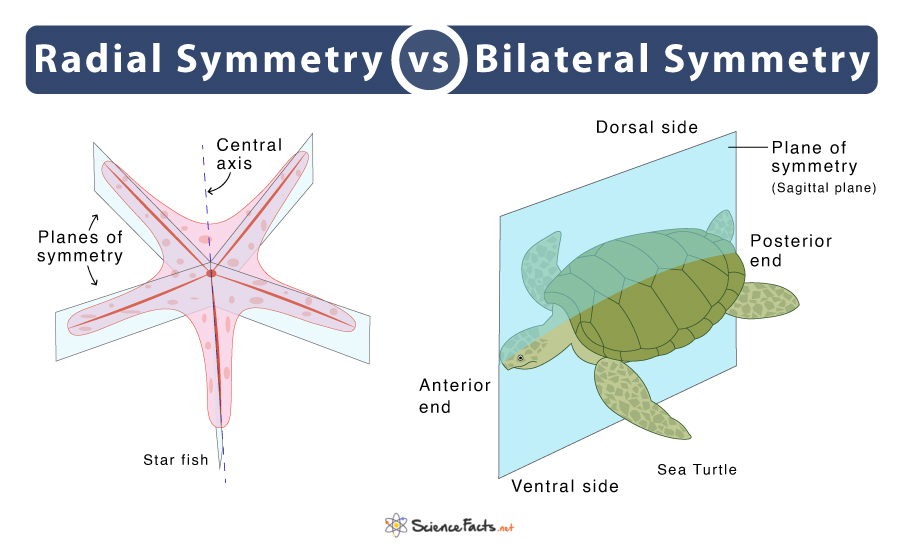Radial symmetry is the arrangement of body parts around a central axis. It is similar to the sun’s rays or a sliced pie. Radially symmetrical organisms have a top and a bottom surface. However, they do not have left or right sides and separate front or rear portions. In contrast, bilateral symmetry is a body arrangement that divides the organism into two halves through a sagittal plane. The two halves, left and right, are mirror images. Animals with bilateral symmetry have a head (anterior) and tail (posterior), front (dorsal) and back (ventral), and right and left sides. Again, in the phylum Porifera (sponges), organisms have no body symmetry and are thus called asymmetrical. These groups of animals share a simple body plan. Sponges have no brains, nerve cells, or organs. Some fish species, like flounder, also lack symmetry as they become adults.
What is the Difference between Radial and Bilateral Symmetry
Conclusion

